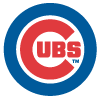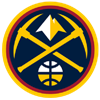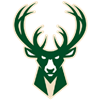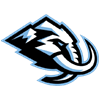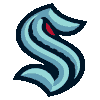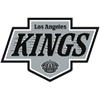Labor talks may be finally drawing to a close as I write this, but fantasy draft season is well underway. While reading about other people's teams can be a bore, analyzing the strategy they use can help you in your own drafts, whether you agree or not with individual picks or the overall approach. With that in mind, let's take a look at my recently completed TGFBI draft.
TGFBI (The Great Fantasy Baseball Invitational) is an industry league that casts a wide net -- I mean, they let me in. This year's contest features 31 leagues of 15 teams each (mixed, 23-man active roster with seven bench spots, usual 5x5 roto scoring), with an overall component as well as individual league winners. This is my second year participating, and the 2022 contest is more than double the size of last year's, so pulling down the overall title becomes that much tougher. Last year, I was semi-competitive in my own league despite losing Eloy Jimenez early and making one glaring mistake late in the draft (which I'll cover in this year's recap), but my overall finish was thoroughly mediocre.
As TGFBI uses KDS preferences to pick draft slots, your strategizing needs to start even before you make your first pick. Looking over this year's player pool, I was struck by how little I cared which late first-rounder I might wind up with. There was a clear top tier of six players for me, and after that, I could work with just
Labor talks may be finally drawing to a close as I write this, but fantasy draft season is well underway. While reading about other people's teams can be a bore, analyzing the strategy they use can help you in your own drafts, whether you agree or not with individual picks or the overall approach. With that in mind, let's take a look at my recently completed TGFBI draft.
TGFBI (The Great Fantasy Baseball Invitational) is an industry league that casts a wide net -- I mean, they let me in. This year's contest features 31 leagues of 15 teams each (mixed, 23-man active roster with seven bench spots, usual 5x5 roto scoring), with an overall component as well as individual league winners. This is my second year participating, and the 2022 contest is more than double the size of last year's, so pulling down the overall title becomes that much tougher. Last year, I was semi-competitive in my own league despite losing Eloy Jimenez early and making one glaring mistake late in the draft (which I'll cover in this year's recap), but my overall finish was thoroughly mediocre.
As TGFBI uses KDS preferences to pick draft slots, your strategizing needs to start even before you make your first pick. Looking over this year's player pool, I was struck by how little I cared which late first-rounder I might wind up with. There was a clear top tier of six players for me, and after that, I could work with just about anything. As such, my first six slot preferences were picks six through one, but after that I just put 15 through seven, so I could get the best possible second-round selection regardless of which tier I was picking from in round one.
Naturally, I wound up with slot 15.
Knowing I would be picking at the far turn clarified some things. ADP was more or less out the window, although in compiling this I ended up a lot closer to it most of the time than I thought. With 28 picks between each of my pairs of selections, if I wanted a guy, I'd better go get him. I also realized, given who was likely to be on the table at 15/16, that I didn't want to do a split start of one ace and one premium hitter. I was far more comfortable either grabbing two hitters, and then working on pitching throughout the draft as values presented themselves, or double-tapping aces and then hammering hitting for a while.
I also made the decision before the draft that I wasn't going to overpay for saves. Yes, there's an overall component to TGFBI, but I'm generally confident in my ability to find closers either in later rounds or via FAB, so if any particular area ended up getting squeezed, that would be it. I wasn't going to ignore an early value if it fell into my lap, but I wasn't expecting that to happen, and in fact it didn't.
As I move through my draft, the ADP data I'll be citing is from NFBC Draft Champions leagues run since Feb. 22, a week before TGFBI slow drafts started up, to give a snapshot of the current environment. Since all the drafts aren't complete yet, TGFBI data isn't available.
Here's how things played out:
1.15 (pick 15) – Max Scherzer, NY Mets (ADP 20.3, min/max 17/24)
2.1 (pick 16) – Brandon Woodruff, Milwaukee (ADP 20.4, min/max 14/25)
I decided to let the room determine whether I'd go heavy on hitting or pitching early. If aces got pushed up, I'd build around two bats. If not, I'd build a strong core for my rotation. Only two pitchers went before me (Corbin Burnes at eighth overall, and Gerrit Cole at 12th), while grabbing the top two hitters remaining would have resulted in me picking from among the likes of Rafael Devers (2.4), Mookie Betts (2.7) or Ozzie Albies (2.8). The choice seemed pretty clear to me. Knowing I'd be going after hitting for a while after this, I prioritized strikeouts over ratios, so Mad Max (who should be even madder after these CBA negotiations) and Woodruff won out over Walker Buehler (2.3) or Zack Wheeler (2.9).
3.15 (pick 45) – Xander Bogaerts, Boston (ADP 48.4, min/max 37/62)
4.1 (pick 46) – Austin Riley, Atlanta (ADP 57.2, min/max 39/70)
Bogaerts was someone I was thrilled to get, and he went after Marcus Semien (3.7), Trevor Story (3.9) and Francisco Lindor (3.13), all of whom I had ranked lower than the X-Man. He's arguably a bit boring and safe, but I needed some boring, safe production on the hitting side.
Riley was a "reach" in the sense I took him well ahead of ADP, but he wasn't making it back to me, and he's got the kind of profile I like in these formats. He's young and may not have reached his ceiling yet, but he's already proven himself in the majors. In these early-middle rounds, I'm looking for hitters who can end up seeming like huge bargains this time next year. Kyle Tucker was a guy I aggressively targeted in last year's drafts on the same principle, and he blossomed into a consensus first-round pick in 2022 drafts. Riley may not have first-round upside, but he could easily be a second-round pick next season in that Devers range. I did strongly consider finding some steals here – Tyler O'Neill went at 4.2 – but there was a speed guy I had my fingers crossed might make it back to my next pair of picks.
5.15 (pick 75) – Jazz Chisholm, Miami (ADP 73.5, min/max 57/97)
6.1 (pick 76) – J.D. Martinez, Boston (ADP 96.2, min/max 88/103)
Sure enough, I got lucky and Chisholm was still there. He's at the top of my "guys who could become first-round picks in 2023 drafts" list, as a 30-30 campaign isn't at all implausible if he stays healthy. If one or two of those guys break out, any early hole in offense I put myself in by not taking my first hitter until pick 45 will be more than wiped out.
Martinez was another pick that could be thought of as a reach, but honestly, his ADP is too low. People are still drafting him like he's stuck at Ut, but he actually has OF eligibility coming into this season. I considered Bryan Reynolds here as well (who lasted until 7.3) and kicked the tires on Nolan Arenado (who went immediately afterwards at 6.2) but ultimately figured J.D. has at least one more good year in him, and building a Red Sox mini-stack gave me a bit more overall upside if the Boston offense takes off.
It's worth noting here the draft was developing in an extremely fortunate manner for me, in that the person picking in the 14 slot was using a completely different strategy than I was, having taken closers at 2.2 (Liam Hendriks, the first one off the board) and 3.14 (Raisel Iglesias). Even his first two hitters were outfielders and not infielders. It basically meant we weren't directly fighting with each other over the same players, and I had a bit less of a sweat hoping guys I was targeting would fall to me.
7.15 (pick 105) – Cody Bellinger, LA Dodgers (ADP 99.4, min/max 91/115)
8.1 (pick 106) – Yasmani Grandal, Chi White Sox (ADP 106.2, min/max 91/121)
Bellinger is a big risk, obviously, but what reports there have been this offseason are of the "woo hoo, I'm healthy again!" variety. He's also on that list of hitters who could provide first-round value, so I bit the bullet.
Grandal was a pick that surprised even me. I'm usually #TeamWaitOnCatchers, but no one else jumped out at me as a great value here, he's in a strong offense, and I had him as the last guy in his tier. The room seemed to agree, as taking Grandal kicked off a mini-run on catchers with Willson Contreras, Tyler Stephenson and Keibert Ruiz all going by pick 9.2.
The other player I strongly considered over Grandal was Luis Castillo, who again I had as the last guy in his tier and who got popped at 8.6, but I elected to wait one more pass before beginning to fill in my staff behind my aces. Had either Alek Manoah (7.1) or Trevor Rogers (7.7) still been there, though, it would have been a different story.
9.15 (pick 135) – Luis Garcia, Astros (ADP 143.9, min/max 127/161)
10.1 (pick 136) – Dylan Carlson, Cardinals (ADP 179.9, min/max 158/219)
This is about where ADP considerations stopped meaning anything at all to me. Up until this point, I kept an eye on it as a way to judge whether someone might fall to me with my next set of picks if there was a big disparity between ranking and ADP, but when Jarred Kelenic went at 9.13, I figured Carlson wasn't making it back and didn't want to try and thread that needle.
I was very happy to see Garcia still on the board. Zac Gallen (9.6) and Carlos Rodon (9.14) went before him in the round, and I would have taken Garcia over either.
At this point in the draft I had no saves, but the same could be said for a handful of other teams so I wasn't too worried about it. I very nearly grabbed Corey Knebel even so, and probably would have immediately regretted taking a Phillies so-called closer, but I resisted the temptation and he went at 10.3. My steals were also weak, but I had a couple minor sources behind Chisholm and still had some later-round targets to bolster the category.
11.15 (pick 165) – Ryan McMahon, Colorado (ADP 156.5, min/max 134/176)
12.1 (pick 166) – David Bednar, Pittsburgh (ADP 163.6, min/max 151/182)
Does McMahon have ridiculously extreme home/road splits? Yep. Does TGFBI have twice-weekly moves, to make it easier to sit him during road trips and allow me to hopefully get a better batting average out of McMahon than he's projected for? Also yep. He was even a bit of a bargain by ADP.
My first closer may seem like an odd choice, but I opted for Bednar over Blake Treinen (12.4) because I think there's a strong chance Kenley Jansen winds up back with the Dodgers, and it's not like Treinen has ever shown year-to-year consistency anyway. Camilo Doval (12.13) and Joe Barlow (12.14) also went later that round, and also ranked lower than Bednar for me for various reasons.
13.15 (pick 195) – Yuli Gurriel, Houston (ADP 212.2, min/max 188/234)
14.1 (pick 196) – Ian Happ, Chi Cubs (ADP 199.2, min/max 164/236)
At this point I needed both a first baseman and some more batting average coverage, so having Gurriel still sitting there was a relief. If he's been gone, I probably would have put my eggs in the Spencer Torkelson (16.12) basket, although Trey Mancini (15.7) was also still around.
Happ is an upside pick with some steals potential. He also probably immediately undid whatever positive impact Gurriel was going to have on my batting average, but hey, there's an overall contest to win here, so ceiling is more important than floor (within reason). I was also looking hard at Tanner Houck, who went at 14.2.
15.15 (pick 225) – Triston McKenzie, Cleveland (ADP 232.2, min/max 199/258)
16.1 (pick 226) – Matt Chapman, Oakland (ADP 183.9, min/max 164/217)
What was that about batting average? Chapman was just too good a value to pass up though, and if he gets dealt to a better hitter's park, he might even climb back up into that .250 range again. In general, I think he's being written off too easily given his athleticism -- his defense was still excellent in 2021 -- and the prior health issues that provide an easy rationale for his downturn at the plate.
McKenzie isn't a particular favorite of mine, but people smarter than me like him this year, he pitches in the right division, and I needed to start adding arms. The next three SPs taken were Jose Urquidy (16.2), John Means (16.3) and Alex Cobb (16.5), and I'm happy getting the upside play from that group.
17.15 (pick 255) – Jonathan Villar, Free Agent (ADP 252.2, min/max 232/297)
18.1 (pick 256) – Bailey Ober, Minnesota (ADP 253.7, min/max 234/273)
Villar was a pure need pick, in that I needed steals and a guy I could potentially sub in at MI for McMahon's road trips. At the time I was avoiding mid-tier unsigned players given the lockout, as I figured there was a real risk they don't find a home quickly if the owners were in a snit after a deal was finally reached, but Villar made too much sense for my roster.
Ober may be an AL Central special, but that's still the division to target for arms right now.
19.15 (pick 285) – Riley Greene, Detroit (ADP 295.3, min/max 275/219)
20.1 (pick 286) – Rowan Wick, Chi Cubs (ADP 302.4, min/max 272/363)
Oooh, fun! Greene is a risk in that he's not even on the 40-man roster yet, but a new CBA could fix that concern, and if the Tigers are as intent on moving up in the standings as their offseason spending suggests, their prized outfield prospect should be part of the plan. I mean, is Daz Cameron really going to be much of a road block? Greene was also looking good in minor-league camp at the time and Julio Rodriguez went at 19.8, so yeah, let's do this thing.
The news about Codi Heuer came a couple days after I drafted Wick, and I suspect that min pick on him has been established since then. I did consider Devin Williams instead, who went at 21.9, and Tanner Rainey got popped in between at 21.1, but Wick seemed like the best option purely for saves.
21.15 (pick 315) – Austin Nola, San Diego (ADP 344, min/max 297/425)
22.1 (pick 316) – Domingo German, NY Yankees (ADP 357.1, min/max 270/400)
Nola's another guy intended to help keep my batting average afloat, but if he's healthy he should be a steal. He's just generally undervalued right now, maybe because of the lingering injury concern, and the two catchers taken before him were James McCann (21.7) and Danny Jansen (21.11).
German's also undervalued, although the reasons people might have qualms about drafting him are understandable. Zach Plesac (22.3) and Adbert Alzolay (23.1) were the other two arms I was considering here, but Plesac's upside has moved into the purely hypothetical category, and how many Cubs am I willing to roster?
23.15 (pick 345) – Randal Grichuk, Toronto (ADP 356.8, min/max 322/405)
24.1 (pick 346) – Robert Suarez, San Diego (ADP 408.9, min/max 301/535)
Grichuk's not a sexy pick, but he gives me OF/Ut coverage and has a solid chance at consistent playing time. I also looked at Clint Frazier (24.15), but see above about not wanting to be over-stocked on Cubs.
Suarez is prospective closer No. 3 for me, and at this point in the draft if he doesn't get the job or winds up as a fringe member of a committee, it's no big loss. Who was I going to take, Kyle Finnegan (24.10)? Jorge Alcala (24.11)? Ugh, I should have taken Alcala.
25.15 (pick 375) – Tyrone Taylor, Milwaukee (ADP 396.9, min/max 370/442)
26.1 (pick 376) – Anthony Bender, Miami (ADP 372.2, min/max 326/432)
The Brewers' outfield could have plenty of at-bats available with Christian Yelich and Lorenzo Cain both at risk to miss time, so I like Taylor as a late-round upside play and possible source of a handful of steals. Cain, incidentally, went at 25.12, and I thought the team in slot 14 had violated our unspoken accord by swiping Taylor from me when I had him all queued up, but then I realized he'd taken Michael Taylor instead. Whew.
Bender is prospective saves source No. 4, as I throw as many darts as possible to make up for passing on established guys early. Pirates, Cubs, Marlins... closers on second-division NL clubs are the new market inefficiency, right?
27.15 (pick 405) – Roansy Contreras, Pittsburgh (ADP 404.9, min/max 328/443)
28.1 (pick 406) – Michael Lorenzen, LA Angels (ADP 513.2, min/max 424/553)
I wanted to get one young potential stud SP, and after Reid Detmers (25.2) and then Cody Morris (27.13) got popped, I went for Contreras over Hunter Greene (28.10) on the basis of him having less competition for a rotation spot.
Lorenzen is purely a lottery ticket, and if he doesn't work out I can blame Jason Collette.
29.15 (pick 435) – Tucker Davidson, Atlanta (ADP 565.5, min/max 492/613)
30.1 (pick 436) – Luis Garcia, Washington (ADP 460.1, min/max 379/529)
I wanted one more SP for my bench, and Davidson has both a fairly clear path to a rotation job on a good team, and a smidge of upside. In round 29, that's good enough for me.
Last year in the late rounds, I felt I needed some MI insurance. Chisholm was sitting right there, but rather than swing for the fences with the pure upside pick, I elected to go for Jose Iglesias as a "safe" option. Dumb dumb dumb. I wasn't making that mistake again, so rather than take, like, Tony Kemp (undrafted) or something with my last pick, I swung for the fences with Garcia, aka Juan Soto Jr. Plus, if the season becomes a total disaster I can always do something fun like picking up all the Luis Garcias and having them all active in my lineup at once.
Here's my final roster, with their round selected:
C – Grandal (8), Nola (21)
1B – Gurriel (13)
2B – Chisholm (5), McMahon (11), Garcia (30)
3B – Riley (4), McMahon (11), Chapman (16), Villar (17)
SS – Bogaerts (3), Chisholm (5), Villar (17), Garcia eventually (30)
OF – Martinez (6), Bellinger (7), Carlson (10), Happ (14), Greene (19), Grichuk (23), TTaylor (25)
SP – Scherzer (1), Woodruff (2), Garcia (9), McKenzie (15), Ober (18), German (22), Contreras (27), Lorenzen (28), Davidson (29)
RP – Bednar (12), Wick (20), Suarez (24), Bender (26)
The lack of a backup 1B in case anything happens to Gurriel is the biggest hole, but I just didn't like any of the values later in the draft relative to players at other positions (i.e. Luke Voit, who went at at 17.12, over Chapman, or Jesus Aguilar, who went at 20.3, over Greene or Wick). Plan A is for Bellinger to regain eligibility (Max Muncy missing the start of the season would help there), and Plan B is to churn a bench spot on a FAB pickup if necessary. First base is a position that tends to produce in-season surprises though, on the "anybody who can hit can slide down the defensive spectrum" theory, so if I had to be short anywhere that's a good spot for it.
Overall I'm reasonably happy with the roster, although Villar finding a starting gig somewhere would be a huge help. Solid contributors backed by upside candidates on offense, the two aces up top to support the rotation, and enough save darts to hopefully have a reasonable (or better) showing in that category. When does the season start?















